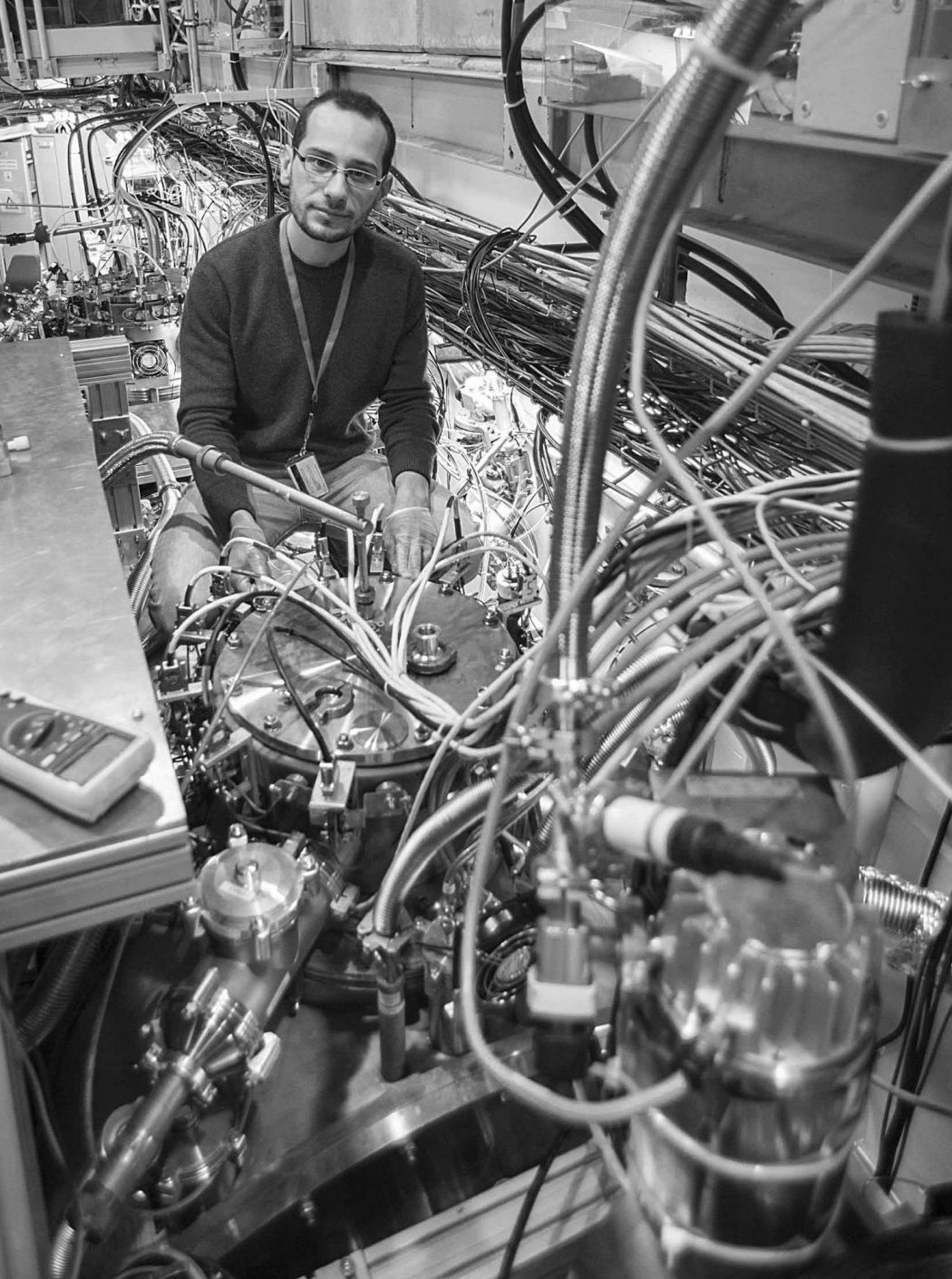One of the specialities of our positron lab is the analysis of lattice defects in structural or functional materials. The main techniques adopted in this laboratory are based on positron annihilation spectroscopy (PAS), in two variants: lifetime spectroscopy (LS) and Doppler broadening spectroscopy (DBS) of the annihilation radiation.

LS gives information on the time of survival of positrons implanted into the sample. This can be directly related to the electron density at the annihilation site, making LS an ideal tool for the study of the concentration and of the size of open volume defects present in the sample.
DBS gives information on the momentum distribution of the electron-positron pair at the annihilation site, which contains contributions coming from annihilations with valence (also conduction) and core electrons. When a positron is trapped at a lattice defect, the core electron contribution allows us to reconstruct the chemical composition of the environment of the defect itself.
Research
Below are mentioned some examples of Materials Science scientific works done in our lab:
- Defects in semiconductor thin layers
- Positronium formation in porous materials
- Precipitation hardening of light alloys
Defects in semiconductor thin layers
Positrons are sensitive to defects associated with threading dislocations generated during the epitaxial growth of semiconductor materials on a substrate with a different lattice parameter. For instance, a reduction of the threading dislocation density is expected for thin SiGe layers deposited on top of an even thinner silicon layer, bonded on silicon oxide (silicon-on-insulator, SOI), which insulates it both mechanically and electrically from the thick Si wafer mechanically sustaining the layer stack. Defect concentration might be reduced by the elastic deformation of the silicon substrate or by the migration of dislocations from the interface to the oxide layer. Our results show that an increment of the relaxation degree in the overlayer is accompanied by the formation of Ge-rich point defects in the SiGe layer (e.g. see ref. 1).
In the past years, our interests also comprise the study of GaN layers grown on sapphire substrates. Positrons have been recently used to identify the gallium vacancy as the main defect responsible for the observed GaN yellow luminescence. Defects in such materials act as charge compensating centers and are closely related to impurities or dopants introduced into the layers. Our purpose is to investigate the influence of the growth conditions on impurity incorporation and vacancy formation (e.g. see ref. 2).
Positronium formation in porous materials
Positronium is an “atom” made of a positron and an electron. There is no nucleus, but the two particles rotate one around the other. Positronium is formed with very high efficiency in soft matter and insulators and it is used nowadays in the study of porous materials for microelectronics (low-k dielectrics), of phase transformations in polymers and in general in the growing field of nano-structured materials. Our efforts are concentrated on the selection of an appropriate material to be used as a positronium converter in the QUPLAS experiment. The ambitious goal of the aforementioned experiment is to measure the gravitational acceleration of positronium.
Precipitation hardening of light alloys
Hardening in selected aluminum and magnesium alloys (2000/7000 series aluminum alloys and WE Mg-Rare earths magnesium alloys) is accomplished by controlling the precipitation kinetics of small particles which impede dislocation motion during plastic deformation. Precipitation mechanisms often involve solute interactions with vacancies during aging: positrons can thus be used to monitor the formation of precipitate precursors made of a few atoms at a such an early stage that hardly any other technique can give the same reliable information. Positrons are also sensitive to open spaces created by the loss of coherence between the precipitates and the host matrix at later stages of the precipitation process. DBS has been used to identify the chemical species of the atoms which surround the vacancies and to study their evolution during aging. Complementary information has been sought by performing small angle X-ray scattering (SAXS) experiments at international synchrotron facilities.

